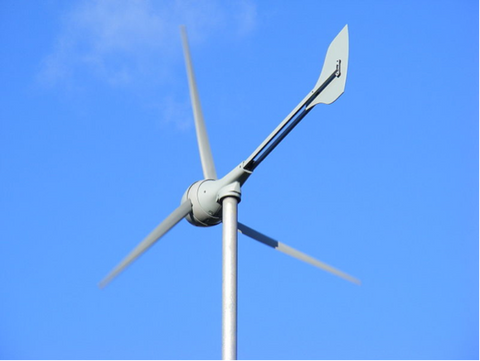Latin America is Opening Up to Renewable Energy Sources
Latin America is Opening Up to Renewable Energy Sources
Several Latin American nations are rising in the Renewable Energy Country Attractiveness Index (RECAI), which is published on a yearly basis by Ernst & Young. The region is becoming a solid market for renewable energy investments of all scales, and this includes small wind and solar power systems for self-consumption.
The global renewable energy targets set forth in the COP21 Climate Change Summit held in Paris in 2015 are already having a positive impact, and an example of this is Latin America. The region has been characterized by a vast renewable energy potential held back by strict regulations from local governments, but this is already changing: countries like Mexico and Argentina are opening up their energy sector and are offering incentives for clean power producers of all scales.
Every year, Ernst & Young publishes the RECAI, which ranks countries based on how attractive they are for investments in renewable energy, and the top 10 spots for the 2016 edition were the following (Latin American countries are marked in capital bold letters):
|
Place |
Country |
|
1 |
United States |
|
2 |
China |
|
3 |
India |
|
4 |
CHILE |
|
5 |
Germany |
|
6 |
BRAZIL |
|
7 |
MEXICO |
|
8 |
France |
|
9 |
Canada |
|
10 |
Australia |
Three large Latin American countries currently occupy spots in the top 10, and other notable mentions include Argentina (18th), Peru (24th) and Uruguay (33rd).
What Has Changed?
Latin America has a considerable potential for wind and solar power, but two obstacles had prevented widespread adoption of clean power technologies until very recently:
- No access to low-interest loans for renewable energy projects, especially small- and medium-sized projects used by homes and businesses for self-consumption.
- Unfavorable regulatory frameworks for renewable energy: extra taxes, lack of incentives, and lack of net metering to synchronize small wind and solar power systems with local power grids.
This has changed over recent years, especially in the months after the COP21 summit in Paris. International finance institutions providing funds for developing regions have turned their attention towards Latin America, and governments have introduced reforms to unburden and incentive clean energy sources. The following are some examples of the actions being taken by Latin American governments in favor of renewable energy:
- Argentina plans to obtain 8% of its energy from renewable sources by the end of 2017, and 20% by the end of 2025. The country has the highest wind power potential in Latin America, with a total untapped capacity of over 2,000 gigawatts and regions where wind turbines can reach capacity factors of 45%.
- Mexico has established a goal of 50% renewable energy production by the year 2050. The country has several locations with a remarkable potential for wind power, especially the region around La Ventosa (English: “The Windy”), in the state of Oaxaca.
Site Assessment: An Important Step Before Any Renewable Energy Investment
With access to low-interest loans and more incentives from local governments and utilities, an increase in the use of small-scale solar and wind power systems can be expected in Latin American homes and businesses. However, in order to ensure the investment yields an attractive return, it is necessary to carry out a detailed assessment of weather conditions at the intended project site.

Access to funds for proper feasibility studies tends to be a considerable limitation in smaller renewable energy systems, but this obstacle can be overcome with an affordable and reliable weather monitoring solution from WindLogger. We offer measurement and monitoring solutions of all types, ranging from basic kits to professional weather stations equipped with GSM technology.
Our weather monitoring systems have been field-tested under the harshest weather conditions, including Antarctica and the Atacama Desert in Chile. They can be equipped with a wide variety of sensors, allowing them to monitor winds patterns with precision, as well as many other variables such as solar radiation and rainfall.
اترك تعليق
سيتم مراجعة التعليقات قبل عرضها.






